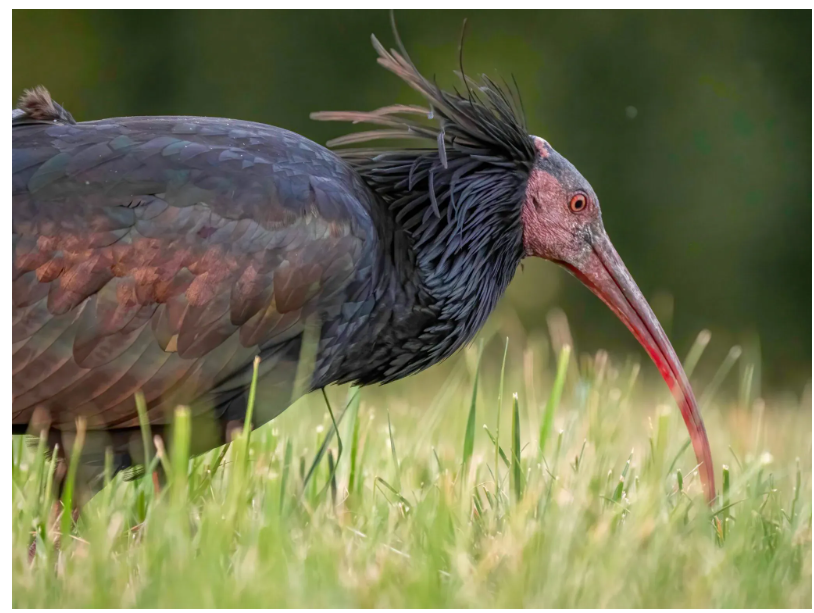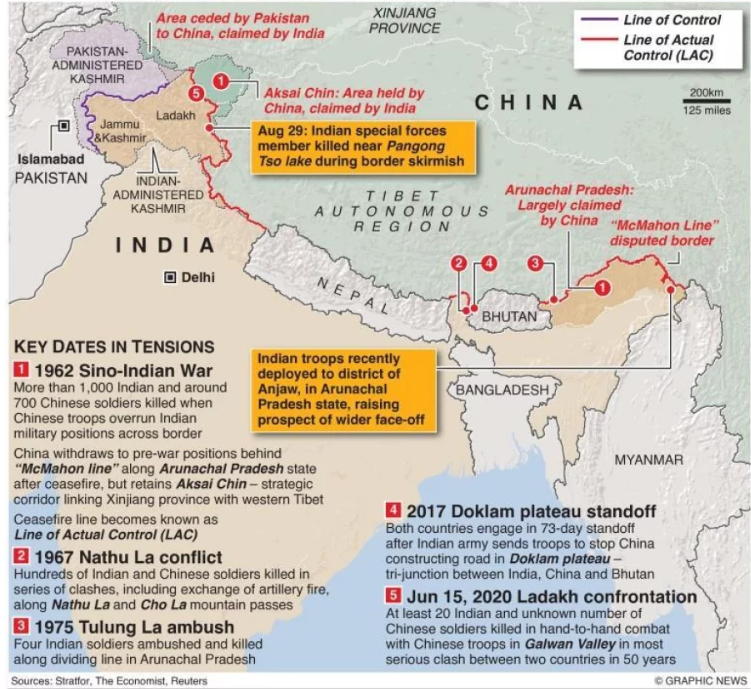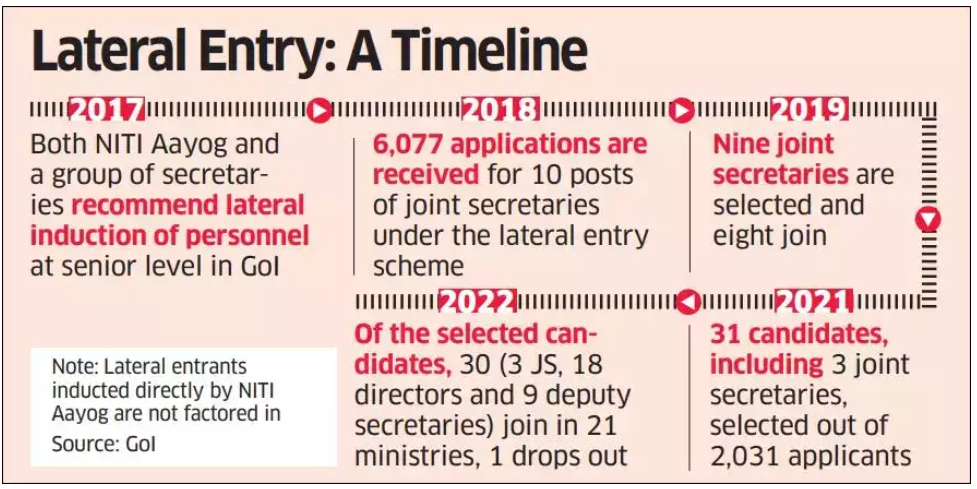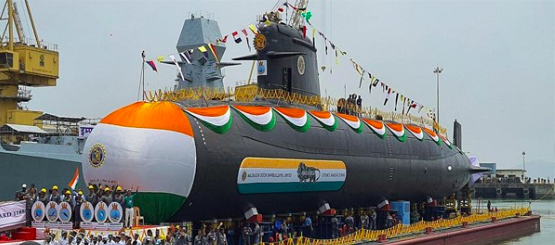30 August 2024 : Daily Current Affairs
1. Guiding Extinction: How Conservationists Are Reintroducing the Northern Bald Ibis Amid Climate Challenges
- 1. Guiding Extinction: How Conservationists Are Reintroducing the Northern Bald Ibis Amid Climate Challenges
- 2. India-China Diplomatic Talks Show Progress in Resolving LAC Standoff, Focus Shifts to Urgent Negotiations
- 3. Why the Union govt. banned 156 ‘irrational’ fixed dose combinations
- 4. When physics merged with biology to revolutionise ophthalmology
- 5. On the controversy over lateral entry into the civil services
- 6. Second Arihant-Class submarine ‘INS Arighaat’ commissioned into Indian Navy
- 7. First indigenously developed Pollution Control Vessel of ICG, ‘Samudra Pratap’ Launched
- 8. Decoding magnetic field-ionosphere relation in Mars can help future space missions
- 9. Rare electron localization phenomena demonstrated, can expand scope of semiconductors
- PRELIMS FACTS
- 1. JIU-JITSU, AIKIDO
- 2. Southampton University to start campus in India
- 3. Bonda tribe student set to pursue MBBS programme in Odisha
(Source: Indian Express; Section: Explained; Page: 11)
| Topic: GS3 – Environment |
| Context: |
| The article discusses the innovative conservation efforts to reintroduce the northern bald ibis in Europe, focusing on teaching migration routes and addressing challenges posed by climate change. |
Analysis of News:

About Northern Bald Ibis
- The Northern Bald Ibis is a rare and endangered species of bird belonging to the ibis family.
- Appearance: Distinctive black-and-iridescent green plumage, bald red head and long curved red beak.
- Size: Approximately 70–80 cm in length with a wingspan of 120–135 cm.
- Habitat: Historically, the bird was found across a broad range in Europe, the Middle East, and North Africa. Currently, it is primarily found in a few locations in Morocco, with reintroduction efforts in Turkey and Europe.
- Behaviour:
- Diet: It is primarily a ground feeder, consuming insects, small reptiles, and other invertebrates.
- Social Structure: The birds are social and live in colonies.
Reintroducing the Northern Bald Ibis: A Conservation Challenge
- Conservationists faced a unique challenge in re-establishing the northern bald ibis in Europe: teaching zoo-raised birds where to migrate in winter.
- These birds, once native to Europe, the Middle East, and northern Africa, were hunted to near extinction by the 17th century, with only a few colonies surviving in Morocco and Syria.
Innovative Migration Training
- Since these reintroduced birds lacked natural migration instincts, early attempts at reintroduction failed.
- To solve this, conservationists from the Waldrappteam used ultralight aircraft to guide the birds along historic migration routes from Bavaria to Tuscany.
- Foster parents, who bonded with the birds from a young age, led them on these journeys. This method has helped increase the central European population to nearly 300 since 2002.
Climate Change Complications
- Climate change has made the traditional migration route from Bavaria to Tuscany less viable due to colder conditions and a lack of warm air currents.
- In response, the Waldrappteam developed a new, longer migration route to Andalusia, Spain.
- This adaptation highlights the growing challenges migratory birds face due to global warming, which is altering migration patterns, habitats, and ecological interactions.
A Model for Conservation
- The northern bald ibis project serves as a blueprint for other migratory bird species threatened by climate change.
- As migration routes and patterns change, this method of guided reintroduction may become essential for the survival of many species.
- The success of this project underscores the potential for innovative conservation strategies in a rapidly changing world.
| Practice Question: Analyze the challenges and innovative strategies used in the reintroduction of the northern bald ibis in Europe. How do climate change and technological interventions impact conservation efforts for migratory species? (250 words/15 m) |
2. India-China Diplomatic Talks Show Progress in Resolving LAC Standoff, Focus Shifts to Urgent Negotiations
(Source: Indian Express; Section: Cover Page; Page: 02)
| Topic: GS2 – International Relations – India and it’s neighbourhood |
| Context: |
| Diplomatic negotiations between India and China aim to resolve the standoff along the Line of Actual Control (LAC) in eastern Ladakh, which began in May 2020. |
Analysis of News:

Recent Developments
- Progress in Talks: The two sides held a “frank, constructive, and forward-looking” exchange of views in Beijing to “narrow down the differences” and “find early resolution of the outstanding issues.”
- Diplomatic and Military Channels: Both countries agreed to intensify contact through diplomatic and military channels, indicating a sense of urgency in the negotiations.
Significance
- New Diplomatic Language: The phrase “narrow down the differences” used for the first time, suggests progress in the bilateral talks.
- Upcoming BRICS Summit: The negotiations gain importance as Prime Minister Narendra Modi is expected to attend the BRICS Summit in Kazan, Russia, in October, where he may meet Chinese President Xi Jinping.
Strategic Implications
- Restoration of Peace: Both sides reiterated the importance of peace and respect for the LAC as the essential basis for restoring normalcy in bilateral relations.
- Focus on Diplomatic Track: The focus is currently on diplomatic efforts rather than military talks, as indicated by the absence of recent Corps Commander-level talks.
Remaining Issues
- Friction Points: Key unresolved areas include the Depsang Plains and Demchok.
- The last significant disengagement occurred in September 2022 at Patrolling Point 15 in the Gogra-Hot Springs area.
- Both sides have deployed around 50,000-60,000 troops along the LAC in eastern Ladakh.
|
PYQ: “Belt and Road Initiative” is sometimes mentioned in the news in the context of the affairs of: (2016) (a) African Union Ans: D |
| Practice Question: Discuss the significance of recent diplomatic engagements between India and China in resolving the standoff along the Line of Actual Control (LAC) in eastern Ladakh. How do these developments impact the broader bilateral relations between the two countries? (250 words/15 m) |
3. Why the Union govt. banned 156 ‘irrational’ fixed dose combinations
(Source – The Hindu, International Edition – Page No. – 7)
| Topic: GS2 – Social Justice – Health |
| Context |
|

Recent Ban on FDC Medicines
- The Union Health Ministry has recently banned 156 fixed dose combinations (FDC) medicines.
- These FDCs include various antibiotics, painkillers, and multivitamins.
- The ban affects the production, marketing, and distribution of these drugs.
| Fixed Dose Combinations (FDC) |
|
Reasons for the Ban
- The ban was issued under Section 26 A of the Drugs and Cosmetics Act 1940.
- Many of the banned FDCs were approved by State authorities but lacked research and clinical trials confirming their safety and efficacy.
- According to the new drugs and clinical trial rules of 2019, FDCs must be approved by the central drug regulator.
- The ban addresses concerns that these combinations may lead to drug resistance and potential health risks due to their irrational use.
- An expert committee recommended the ban, finding that there was no therapeutic justification for the FDCs and that safer alternatives were available.
Potential Implications
- Public Health Protection: The ban aims to prevent health risks and safeguard the public from the dangers of irrational drug combinations.
- Drug Resistance: By controlling the use of these FDCs, the government hopes to reduce the development of resistance to certain drugs.
- Market Impact: The ban may impact pharmaceutical companies and the availability of certain combination drugs in the market.
- Increased Scrutiny: There will be greater scrutiny and regulatory oversight of FDCs moving forward, ensuring that new combinations undergo proper research and approval processes.
| Practice Question: Discuss the rationale behind the recent ban on fixed dose combination (FDC) medicines by the Union Health Ministry. (150 Words /10 marks) |
4. When physics merged with biology to revolutionise ophthalmology
| Topic: GS3 – Science and Technology |
(Source – The Hindu, International Edition – Page No. – 7)
| Context |
|
The Physics of Lasers: Einstein’s Theory
- In 1917, Albert Einstein introduced the concept of stimulated emission, where an excited electron releases a photon, and that photon stimulates the emission of another photon with identical energy, phase, and direction.
- This process forms the basis of laser technology, allowing for the amplification of light into coherent and highly focused beams.
Chirped Pulse Amplification (CPA): Revolutionising Lasers
- Gérard Mourou and Donna Strickland developed CPA in the 1980s, amplifying ultrashort laser pulses without damaging the amplifying material.
- CPA stretches a short pulse, amplifies it, and then compresses it back, allowing for high-intensity, ultrashort laser pulses.
- Their breakthrough earned them the Nobel Prize in Physics in 2018 and has significant medical applications.
Femtosecond Laser
- A femtosecond laser emits light pulses lasting only a few quadrillionth of a second, allowing for extremely precise tissue cutting with minimal collateral damage.
- It operates in the infrared range with a wavelength of 1053 nm, significantly reducing the risk of damage to surrounding tissues in procedures like eye surgeries.
Potential Medical Applications
- Femtosecond lasers are used in vision correction (refractive errors), cataract surgeries, and potentially in cancer therapy by precisely targeting cancer cells while sparing healthy tissue.
5. On the controversy over lateral entry into the civil services
| Topic: GS2 – Governance |
(Source – The Hindu, International Edition – Page No. – 10)
| Context |
|

Arguments for Lateral Entry to Civil Services
- Specialised Knowledge: Lateral entry introduces specialised skills and expertise in areas like emerging technologies, climate change, and cybersecurity, which are often lacking in traditional civil services.
- Fresh Ideas: Bringing in experts from outside infuses new perspectives and innovative ideas, potentially revitalising and modernising government functions.
- Enhanced Responsiveness: Lateral entrants can make career bureaucrats more responsive and adaptable by introducing new practices and standards.
- Expertise at High Levels: Past lateral entrants, such as Montek Singh Ahluwalia and M.S. Swaminathan, have significantly contributed to policy-making with their specialised knowledge at senior levels.
Arguments Against Lateral Entry to Civil Services
- Domain Expertise: IAS officers acquire extensive field experience, which lateral entrants may lack. This experience is crucial for understanding complex bureaucratic systems and handling administrative challenges.
- Coordination Issues: Lateral entrants may face difficulties integrating with established career bureaucrats, potentially leading to coordination and communication problems.
- Conflict of Interest: Hiring from the private sector can lead to issues of opaqueness and conflicts of interest, as private sector professionals might have different priorities and agendas.
- Administrative Challenges: Excessive focus on lateral entry may overlook systemic issues within the bureaucracy, such as red-tapism and inefficiency. Career bureaucrats, despite their challenges, operate within a complex framework of rules and political interference.
Way Forward
- Balanced Approach: Lateral entry should be balanced with traditional merit-based recruitment, incorporating technical competence while also addressing equity and social justice concerns.
- Strengthen Bureaucratic Autonomy: Ensuring the independence of career bureaucrats regarding postings, transfers, and tenures is essential for effective governance.
- The Supreme Court’s judgement in the T.S.R. Subramanian case advocates for strengthening Civil Service Boards to uphold this autonomy.
| Practice Question: Discuss the implications of lateral entry into civil services on the merit system and administrative efficiency. Analyse the potential benefits and challenges of incorporating private sector professionals into senior government positions. (250 Words /15 marks) |
6. Second Arihant-Class submarine ‘INS Arighaat’ commissioned into Indian Navy
(Source – https://pib.gov.in/PressReleseDetail.aspx?PRID=2049870 )
| Topic: GS3 – Science and Technology |
| Context |
|
INS Arighaat:
- INS Arighaat is the second Arihant-class submarine commissioned into the Indian Navy on August 29, 2024.
- It is more advanced than its predecessor, INS Arihant, incorporating specialised materials and complex engineering.

- The submarine is part of India’s strategic nuclear deterrent and contributes to the country’s “nuclear triad.”
- INS Arighaat is part of India’s long-term plan to develop both nuclear-powered and conventional submarines.
- The Indian Navy aims to commission five Arihant-class submarines and six nuclear attack submarines over time.
| Arihant-Class Submarines |
|
- The Arihant class is named after a Sanskrit word meaning “Destroyer of the Enemy,” reflecting its strategic purpose.
- The project also boosted the country’s industrial sector, especially MSMEs, and generated employment opportunities.
- The commissioning aligns with India’s defense modernization and self-reliance goals under the ‘Aatmanirbhar Bharat’ initiative.
7. First indigenously developed Pollution Control Vessel of ICG, ‘Samudra Pratap’ Launched
| Topic: GS3 – Science and Technology |
(Source – https://pib.gov.in/PressReleseDetail.aspx?PRID=2049860 )
| Context |
|

Analysis of the news:
- The Pollution Control Vessel (PCV) Samudra Pratap was indigenously built by Goa Shipyard Limited (GSL) for the Indian Coast Guard (ICG).
- The ship was designed and constructed in-house by Goa Shipyard Limited (GSL), marking a significant step in India’s self-reliance in shipbuilding.
- Samudra Pratap is part of a Rs 583 crore contract for two Pollution Control Vessels, the first of their kind to be indigenously built.
- The vessel is 114.5 metres long, 16.5 metres wide, and displaces 4170 tons.
- It is equipped to combat oil spills and pollution along India’s coastline.
- The launch highlights India’s growing capabilities in producing advanced maritime vessels aimed at protecting marine ecosystems.
8. Decoding magnetic field-ionosphere relation in Mars can help future space missions
(Source – https://pib.gov.in/PressReleseDetail.aspx?PRID=2049766 )
| Topic: GS3 – Science and Technology |
| Context |
| Researchers at the Indian Institute of Geomagnetism analyzed Mars’ crustal magnetic field and its effects on the ionosphere using MAVEN data, revealing strong daytime control and implications for future space missions. |
How Decoding magnetic field-ionosphere relation in Mars can help future space missions?
- Understanding the crustal magnetic field’s effect on Mars’ ionosphere is crucial for future space missions due to its implications on radiation shielding and spacecraft protection.
- Mars lacks a global magnetic field, so the localised crustal fields play a significant role in shielding the ionosphere from solar wind and cosmic radiation.
- Daytime crustal magnetic fields, which are stronger and more influential on the ionosphere, could impact spacecraft electronics and crew safety.
- Knowledge of these effects can guide mission planning and spacecraft design.
- Insights into the variability of crustal magnetic fields with the Sun-Mars distance help in anticipating seasonal and spatial changes in ionospheric conditions, crucial for mission timing and navigation.
- Understanding these interactions aids in developing better models for atmospheric behaviour, essential for predicting and mitigating risks during robotic and human exploration of Mars.
| PYQ: India has achieved remarkable successes in unmanned space missions including the Chandrayaan and Mars Orbiter Mission, but has not ventured into manned space missions, both in terms of technology and logistics? Explain critically. (150 words/10m) (UPSC CSE (M) GS-3 2017) |
| Practice Question: Discuss the significance of understanding Mars’ crustal magnetic fields and how can this knowledge influence mission planning and spacecraft design? (150 Words /10 marks) |
9. Rare electron localization phenomena demonstrated, can expand scope of semiconductors
| Topic: GS3 – Science and Technology |
(Source – https://pib.gov.in/PressReleseDetail.aspx?PRID=2049764 )
| Context |
|
Discovery Information:
- Researchers at JNCASR have found a new way to change how electrons behave in semiconductors by adding random impurities like oxygen and magnesium.
- This causes a big shift from metal to insulator in the material.
- It shows how electrons can get stuck in one place, which was previously hard to prove.
Potential Applications:
- Lasers: Improved materials could lead to more efficient and powerful lasers.
- Optical Modulators: Enhanced control over light in communication systems.
- Photoconductors: Better materials for devices that convert light into electrical signals.
- Spintronic Devices: Advances in technology that use electron spin for data storage.
- Holography: New materials could improve dynamic holographic displays.
- Sensors: More sensitive and accurate sensors for various applications.
| Practice Question: Discuss the implications of the recent discovery of the quasiclassical Anderson transition in semiconductors. How might this finding affect future technologies? (150 Words /10 marks) |
PRELIMS FACTS
1. JIU-JITSU, AIKIDO
(Source: Indian Express; Section: Explained; Page: 11)
| Context: |
| The article discusses Rahul Gandhi’s practice of jiu-jitsu during his Bharat Jodo Nyay Yatra, highlighting the principles and historical context of jujutsu and its various offshoots. |
Analysis of News:
Understanding Jujutsu (Jiu-Jitsu)
- Origins and Meaning: Jujutsu, often inaccurately Romanized as jiu-jitsu, is a Japanese martial art that translates to “gentle art.” It originated in late 16th century Japan, developed by samurai warriors for self-defense when disarmed.
- Core Principle: The essence of jujutsu lies in manipulating the opponent’s energy rather than opposing it directly. Techniques include pins, joint locks, and throws.
Aikido: A Jujutsu Derivative
- Development: Aikido, developed by Morihei Ueshiba in the early 20th century, means “way of harmonizing energy.” It focuses on self-defense without harming the opponent, emphasizing deflection over force.
- Philosophy: Aikido stresses overcoming oneself rather than fostering violence. It has no competitions, instead prioritizing demonstrations and holistic growth.
Jujutsu’s Offshoots
- Judo: Evolved in the late 19th century from traditional jujutsu, it became an Olympic sport in 1964.
- Sambo: Developed by the Soviet Red Army in the 1920s to enhance soldiers’ combat skills.
- Brazilian Jiu-Jitsu: Developed in the 1920s, it focuses on using leverage and weight distribution to allow a smaller person to defeat a larger opponent.
- Mixed Martial Arts (MMA): The most popular combat sport today, heavily influenced by jujutsu and other styles.
2. Southampton University to start campus in India
(Source – The Hindu, International Edition – Page No. – 6)
| Context |
| The University of Southampton received approval under UGC regulations to establish India’s first foreign university campus, expanding local educational opportunities, research, and collaboration, starting July 2025. |
Analysis of the news:
- The Centre issued a Letter of Intent (LoI) to the University of Southampton, UK, to establish a campus in India.
- This is the first university to receive a Letter of Intent (LoI) under the UGC regulations for setting up foreign campuses.
- UGC Chairman M. Jagadesh Kumar announced that the university is expected to commence academic programs by July 2025.
- Degrees awarded by the Indian campus will be equivalent to those from the UK campus.
- The establishment aims to provide more study opportunities, enhance research, and foster knowledge exchange, enterprise, and engagement for students in India.
3. Bonda tribe student set to pursue MBBS programme in Odisha
(Source – The Hindu, International Edition – Page No. – 2)
| Context |
|
Odisha’s Bonda tribe:
Challenges: The Bondas face issues such as poverty, lack of education, and access to health facilities, and they are increasingly vulnerable to outsider exploitation and modernization pressures.
Location: The Bonda tribe primarily resides in the isolated hilly regions of Malkangiri district in Odisha, especially in the Bonda Hills within the Eastern Ghats.
PVTGs: Bondas are one of the 13 Particularly Vulnerable Tribal Groups (PVTGs) in Odisha, part of the 75 PVTGs identified across India.
Ethnicity: They are part of the Austroasiatic language family and are among India’s most primitive tribes.
Language: They speak the Bonda language, which belongs to the Munda group of languages.
Economy: Known for their traditional agrarian lifestyle, they practise shifting cultivation and are hunter-gatherers.
Distinctive Appearance: Bonda women are distinguished by their minimal clothing, large metal neck rings, and intricate beaded jewellery.
Social Structure: The tribe is organised into matriarchal clans, with women playing significant roles in decision-making.



